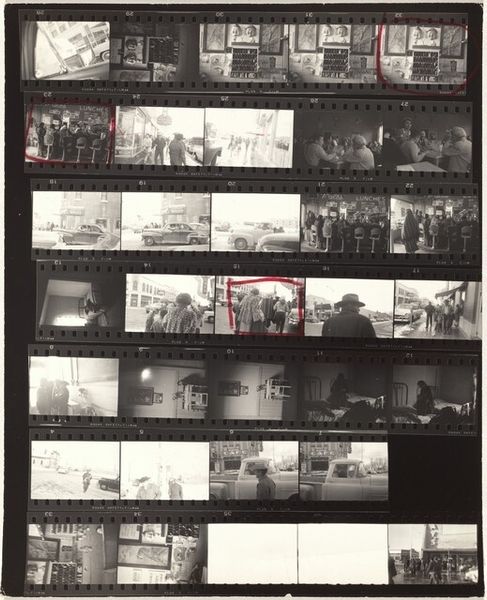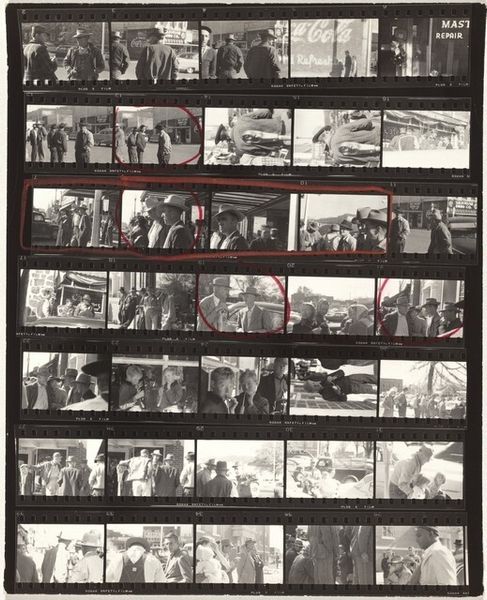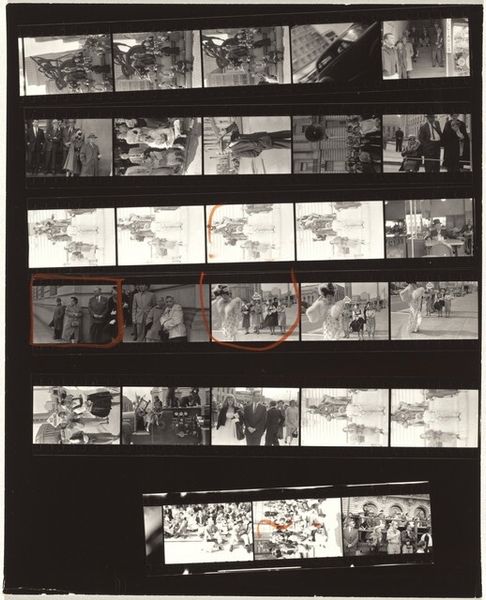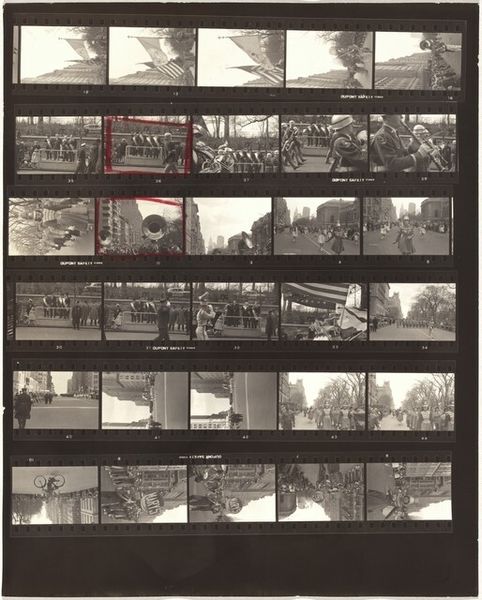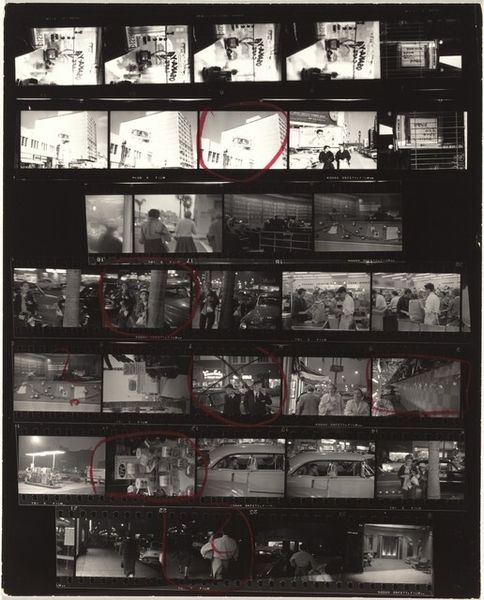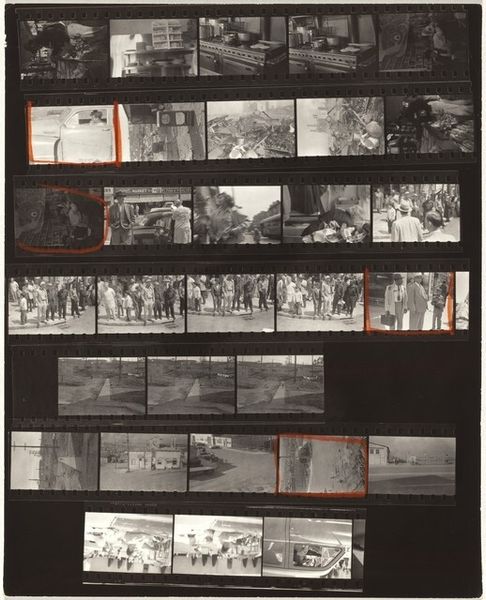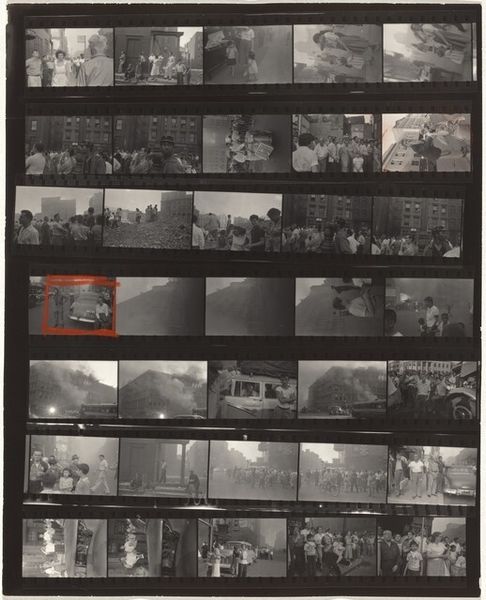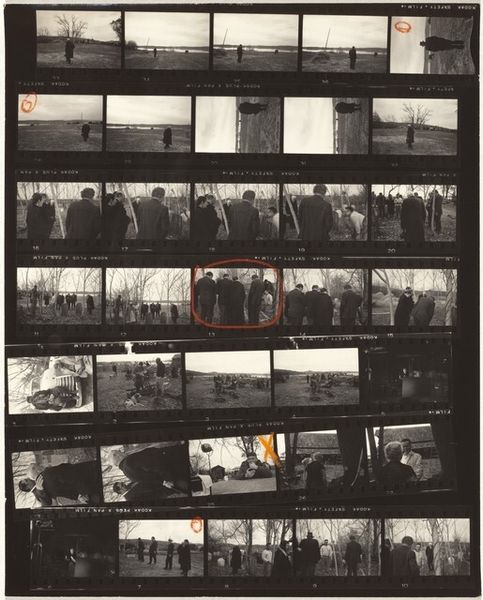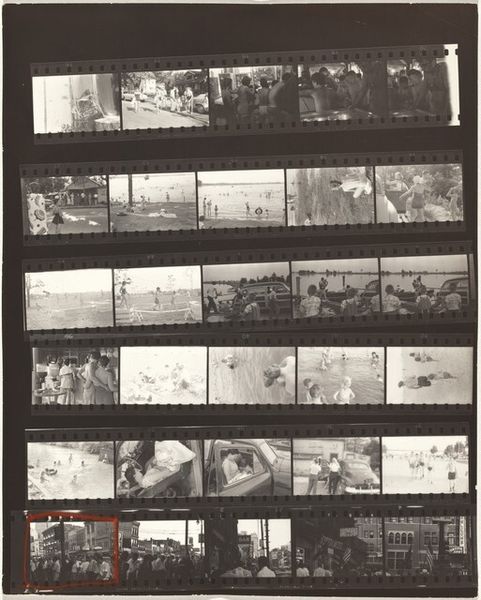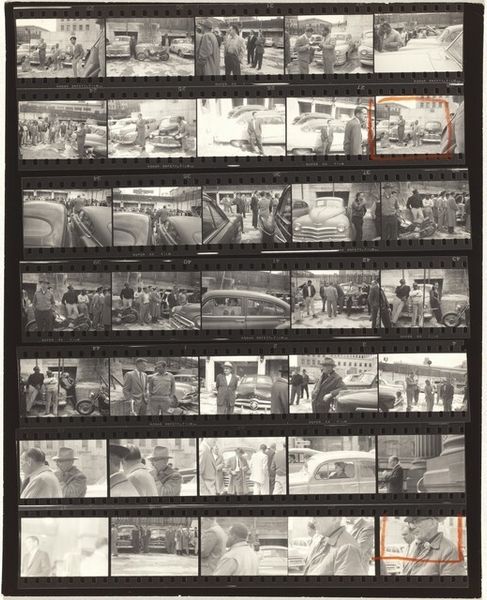
photography, gelatin-silver-print
#
portrait
#
film photography
#
landscape
#
street-photography
#
photography
#
gelatin-silver-print
#
pop-art
#
film
Dimensions: overall: 25.3 x 20.4 cm (9 15/16 x 8 1/16 in.)
Copyright: National Gallery of Art: CC0 1.0
Editor: Here we have Robert Frank's "Guggenheim 318--Chattanooga, Tennessee" from 1955, a gelatin silver print presented as a contact sheet. I am immediately drawn to the documentarian feel and how this format captures an era, somehow. How do you interpret this work and its visual language? Curator: This contact sheet is much more than a series of outtakes. It is Frank's critical gaze pointed at the fissures in postwar American society, revealing underlying tensions of race and class hidden beneath the surface of supposed prosperity. What do you notice about the sequencing of these images? Does the repetition create a specific kind of narrative, in your opinion? Editor: Well, the repetition, particularly the focus on groups of people and cars, emphasizes the societal aspect, but also maybe a kind of anonymity? Each person is part of a larger group, a face in the crowd. Curator: Exactly. Frank challenges the myth of the American Dream. The automobiles, often cited as symbols of freedom and affluence, appear here almost as barriers or divisions. Look at how segregated these groups appear. The work becomes a critique of consumerism and social stratification during this period. What statement might he be trying to make? Editor: I see it. There's definitely a feeling of division, maybe unease? He’s not just showing what’s there, but asking us to question what’s underneath the surface. It seems that through presenting the process of his photography he encourages a conversation on the society that he is documenting. Curator: Precisely. And Frank's conscious choices amplify this. Through fragmentation he reveals a multi-layered, ambivalent America far removed from the utopian ideal. This work moves beyond simple observation and provokes essential inquiries into the power dynamics structuring American identity.
Comments
No comments
Be the first to comment and join the conversation on the ultimate creative platform.
